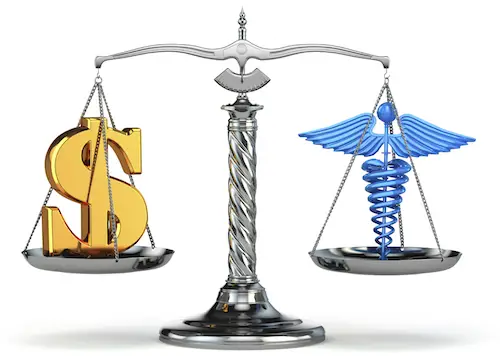g>
For the 2015 Open Season, the big news is the new “Self plus One” option for employees and annuitants. But as a recent FedSmith article shows, the savings are often small and Self plus One can cost more than Self plus Family.
Self plus One was enacted in a budget deal in 2013. Even though the new option was expected to save no money whatsoever, arcane budget scoring rules led the Congressional Budget Office to estimate that it would reduce “on-budget direct spending outlays” by $300 million a year (“discretionary spending” “subject to appropriation” would increase by an equal amount, for a net effect of zero). This budget gimmick assumed that the proportion of Self plus One enrollees would be higher among retirees than among current employees—empty nesters compared to young families.
Under this change, savings to couples and single parents with one child and costs to families of three or more will exactly offset, since each plan has to cover the costs of those enrolled, whether sliced and diced two ways or three ways. But many couples have been surprised at how little their savings will be.
In the two plans with the largest enrollment, Blue Cross Standard and Blue Cross Basic, the difference between Self plus One and Self plus Family premium will be only $180 and $90 a year, respectively. Also, in these same two plans, the cost of two Self Only premiums will be about $5,200 a year and $3,600 a year, considerably less then the Self plus One premiums of $6,000 and $4,200.
Results are similar in most other plans. But in some cases Self plus One will actually cost more than Self plus Family. These include MHBP Standard, NALC High, Foreign Service, most Kaiser High options around the country, and most Aetna plans.
What Gives?
What is going on? How could Self plus One save so little?
Four factors affect the costs of Self plus One relative to other enrollment categories.
First, and by far the most important, older people cost more—a lot more—in health care expenses than younger people. The average cost for someone over age 65 is close to $12,000 a year. The average cost for a child or a young adult is under $3,000 a year. So a retired couple costs close to $24,000, compared to under $12,000 for a young family of four. If age were the only factor those “empty nester” couples would pay a lot more than young families.
A second factor is that two people of roughly the same age will cost, on average, about twice as much as one person. Considering just family size, one would expect a Self plus One premium to be about double the size of two Self Only enrollments, and about two thirds as much as premiums for a family of three. So it would—but this doesn’t offset the bigger effects of age.
A third factor is Medicare. An annuitant couple in which both have Parts A and B of Medicare will cost the FEHBP a lot less than otherwise because Medicare pays most of the cost. But “most” is not “all,” and Medicare A and B don’t cover the cost of prescription drugs, nor does Medicare pay the entire hospital or doctor bill, so the FEHBP plan covers some or all of the difference. The overall reduction by Medicare A and B is only about three fourths of that $12,000 cost, and the $3,000 the FEHBP pays is as much as it pays for young enrollees.
Moreover, not all annuitants have Medicare Parts A and B. Under age 65, annuitants get Medicare only if disabled. Over age 65, many annuitants elect not to sign up for Part B. There are about 450,000 annuitants and annuitant families headed by someone age 55 to 64. And of the 1.4 million annuitants and annuitant families over age 65, about 240,000 have Part A only.
Fourth, the statutory formula for computing the enrollee shares of premiums can lead to strange results. There is a maximum dollar amount that the government will pay for any category of enrollment. That maximum is lower for Self plus One than for Self plus Family. Because in some plans the total cost of Self plus One is so close to (or even higher than) the Family cost, the Self plus One employee share can be higher.
Lessons to be Learned
What should the alert couple or single parent learn from this witches’ brew of competing forces? Here are the lessons I see:
- Take your Self plus One savings no matter how small. One or two hundred dollars is a nice Christmas present for your spouse or child.
- But don’t assume your plan is one of those that will save you money—check to be sure the Self plus One premium is lower.
- Since you are going to have to go to the trouble of making an enrollment change to get that savings, this is the year when you should finally take the plunge and spend an hour or two comparing plans. Most enrollees can save $2,000 or more by changing plans.
- Thanks to collaboration between OPM and the plans, there are more plans now offering a Medicare wrap around. Savings can be very large in those with the lowest premiums or best deals.
- Finally, don’t wait until the last minute. Do not assume that employee express or the OPM retiree web site will not wilt under the pressure of a million people trying to make a last minute enrollment change. OPM offers retiree help at 800-332-9798, but that number has been overwhelmed.
To find bargains, individuals can get the online version of CHECKBOOK’s Guide to Health Plans for Federal Employees for $9.95. Orders can be placed online, or by calling 202-347-7283. Many federal agencies make the Guide available free to their employees, so check to see if your agency is one of these.



